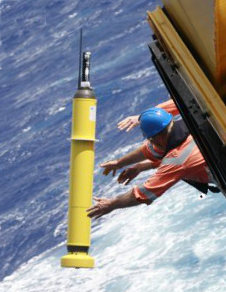Ocean probes enhanced with cross-water friendship
 CSIRO researchers are using smart yellow sticks to see what makes the Indian Ocean tick.
CSIRO researchers are using smart yellow sticks to see what makes the Indian Ocean tick.
Using floating robots armed with an array of tools and sensors, scientists from Australia and India are working together to probe our shared divide.
As well as vast fisheries and mineral resources, the Indian Ocean also plays a direct role in driving the climate of its surrounding regions – which are home to more than 16 per cent of the world's population.
CSIRO and Indian National Institute of Oceanography (CSIR-NIO) are adding to the ‘Argo floats’ already in the water. There is an existing network of 3600 free-floating sensors, which will be amplified with the addition of new ‘Bio Argo’ floats.
The Bio Argo floats include sensors for dissolved oxygen, nitrate, chlorophyll, dissolved organic matter, and particle scattering – all intended to plug gaps in the current understanding of the ocean and its operation.
“By studying the Indian Ocean in this detail, we can investigate the origin and impact of marine heatwaves like the one that devastated the coral reefs and fisheries off north Western Australian in 2011 – and improve our prediction of them in the future,” CSIRO's Dr Nick Hardman-Mountford said.
CSIR-NIO Director, Dr Wajih Naqvi, said the novel technological innovation will give researchers from both countries a new understanding of the Indian Ocean.
"We expect the technology being utilised in this project to provide new insights into the biogeochemistry of the Indian Ocean and how it is being impacted by human activities," Dr Naqvi said.
The $1 million project was funded in part by the Australia-India Strategic Research Fund.
Experts explain the floating robots in the following video;








 Print
Print